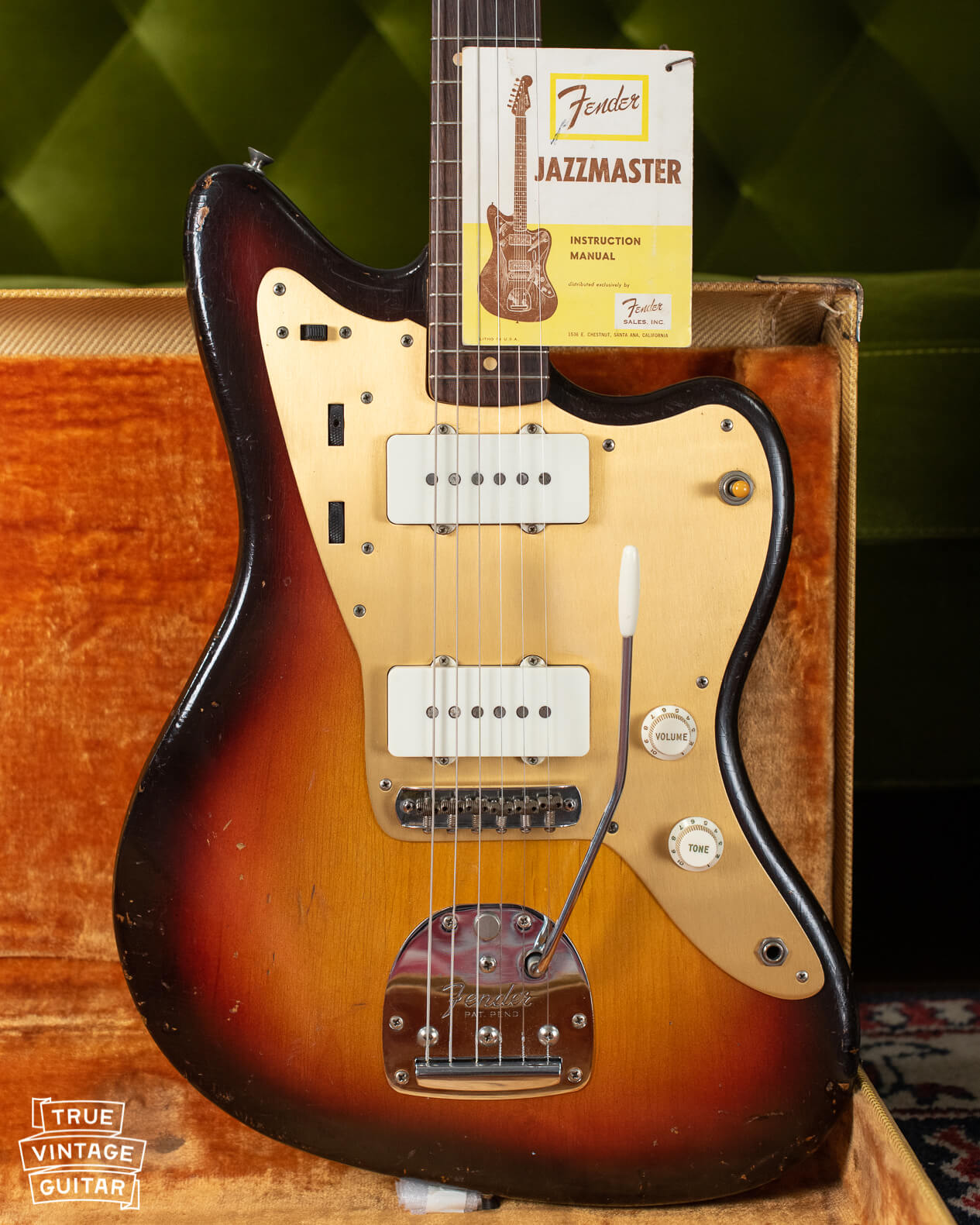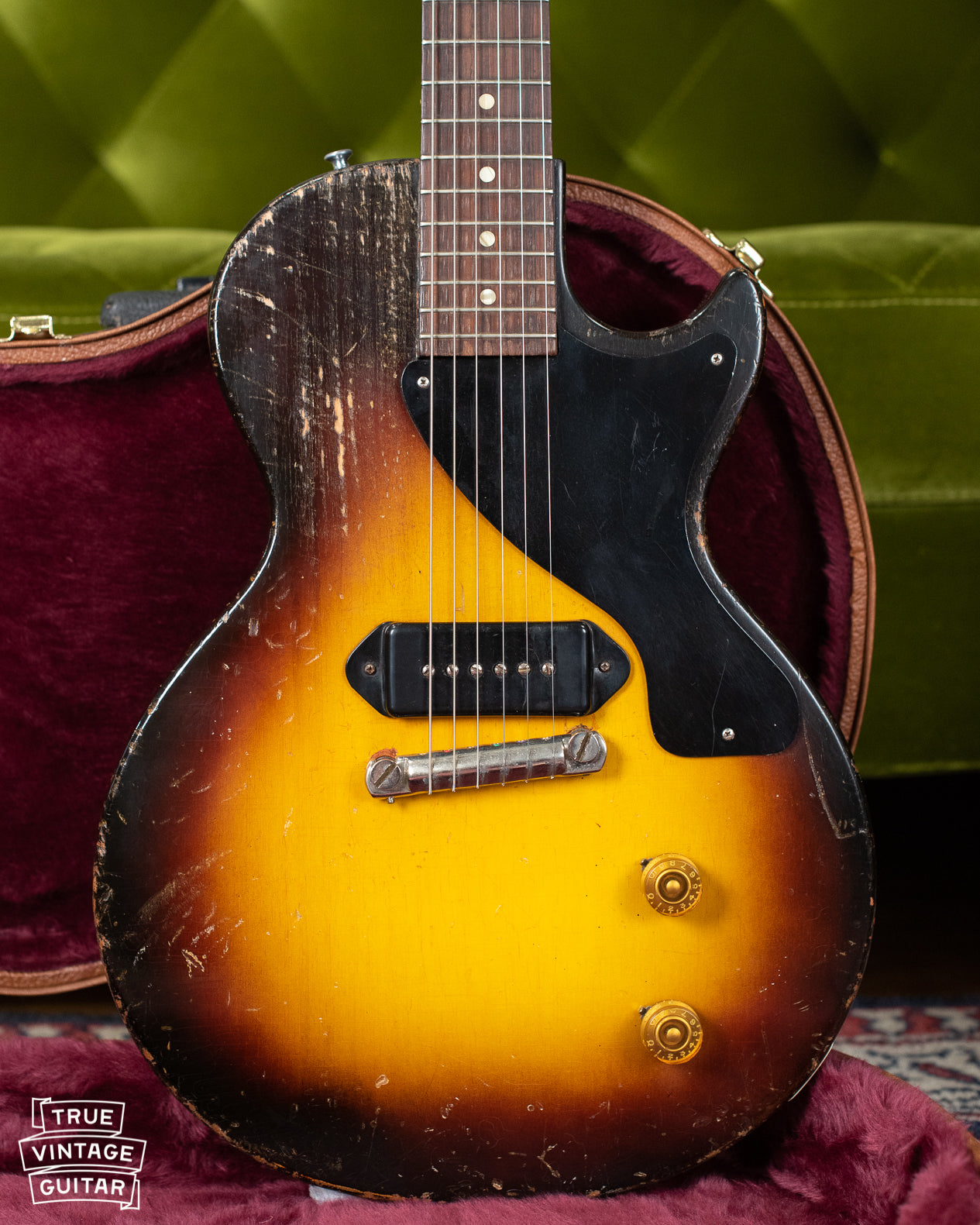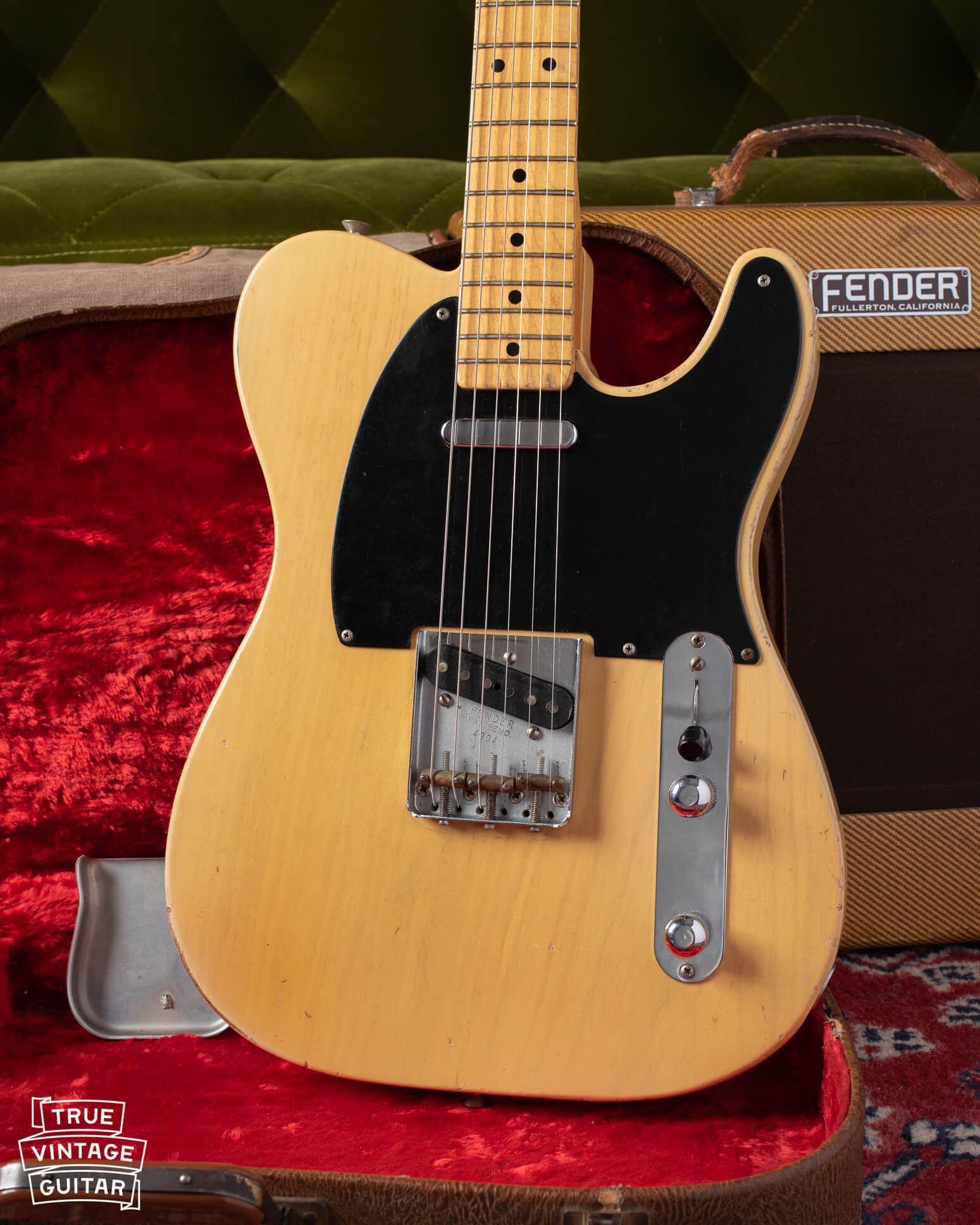Knowing how to date a Fender Jazzmaster is the first step in finding out how much it's worth. Fender debuted the Jazzmaster model in 1958 and slowly updated the model through the late 1950s, 1960s, until discontinuing the model for a few years in the late 1970s. Fender guitar collectors look at each aspect of the guitar to find out if all parts of the Jazzmaster match to the same year. I want you to know what a Fender guitar expert looks for to find the year of a Fender Jazzmaster so you can feel confident enough to sell it.
If you think you have a vintage Fender Jazzmaster from the 1950s, 1960s, or 1960s and are looking for help with how to date it then you can contact me at the red button below. I'm always on the hunt for nice examples of vintage Fender Jazzmaster guitars. If you've considered selling your Jazzmaster and are looking for a passionate Fender collector then I may be the one you're looking for. You can contact me at the button below or send pictures to the contact information at the bottom of this page. I'm looking forward to checking out your vintage Jazzmaster. You can also contact me here: Sell a Fender Jazzmaster.
If you're interested in more information about Jazzmasters then I recommend this book: Fender: The Golden Age 1946-1970. Martin Kelly and Terry Foster put together an amazing resource for all vintage Fender guitars made during the golden era for the company.
How to date a Fender Jazzmaster
1. Fender Serial Numbers
Fender serial numbers are not the most reliable way to date a vintage Jazzmaster since they're style specific, not necessarily consecutive, and they're easily swapped for a different number using only a screwdriver. Still, they're an important first step in finding the year it was made. Fender guitar collectors are looking for Jazzmasters that have all their original parts so it's best if the year indicated by the serial number matches the rest of the guitar. Here's a good resource for vintage Fender serial numbers: Fender Serial Numbers.
Fender Jazzmaster serial numbers are found on the back of the guitar on the neck plate from 1958 until 1977. If the serial number on your Jazzmaster is 5 digits between 30000 and 99999, your Jazzmaster may have been made between 1958 and 1963. If the serial number begins with an "L" followed by 5 digits, your guitar was likely made between 1963 and 1965. If your serial number has 6 digits above a large stylized "F", then the guitar may have been made between 1965 and 1977. Click the link above for more specific years for each Fender serial number range.

2. Neck and Body Dates
The next step for how to date a Jazzmaster is to inspect for neck heel and body dates. Jazzmasters made between 1958 and 1963 will usually have a pencilled month and year indicating when the neck was roughly shaped. Jazzmasters made mid 1962 and later will usually have a stamp with a bit more information. If you're not familiar with disassembling guitars, I recommend leaving this part of the inspection to a Fender guitar expert. There's a chance of damage if the neck is removed incorrectly. This Fender Jazzmaster has a neck heel pencil signature of "11/58" which indicates that the neck was shaped during November of 1958.

Fender updated the neck heel date in 1962 with a stamped code. The code has a number indicating the intended model, month, year, and neck width code. The code on the Jazzmaster below reads "4JAN63B" where 4 = Jazzmaster model, JAN = January, 63 = 1963, and B = standard nut width of 1 5/8". Click Contact Me if you're looking to sell a Jazzmaster made in the late 1950s or 1960s.

Jazzmasters made between 1958 and 1965 may also have a penciled month and date in the bridge pickup cavity which indicates when the body was routed. This is another part of the Jazzmaster dating process that I recommend leaving to then Fender guitar experts. The Jazzmaster below has a bridge pickup cavity date indicating that it was routed in October of 1960.

3. Potentiometer Codes
We can also use the potentiometer codes to help find the year of a Jazzmaster. Potentiometers are variable resistors which allow the player to control the volume and tone of the signal being sent to the amp. Potentiometers have codes on them that indicate the manufacturer, year, and week of the year they were made. The potentiometer codes may not match exactly, but they at least need to be close to the other dates on the Jazzmaster.
The code on the volume potentiometer on the Jazzmaster below reads 304641. 304 is the manufacturer code for Stackpole, 6 in this case indicates 1956, and 41 indicates the 41st week of the year. The guitar below was made in 1958, but sometimes the potentiometer codes can predate the guitar by a few years. If the code is much newer than the rest of the guitar then it has likely been replaced.

4. Features
Jazzmaster collectors can date a Jazzmaster just by looking at its exterior features. A Fender guitar expert will look for the logo style, fretboard markers, tremolo plate, knobs, and many other parts of the guitar to get a feel for what year it was made. It's not possible to explain all of them here, but there are a few easy tells.
The Fender Jazzmaster logo changed many times throughout the 1950s and 1960s, but the most significant change was in 1964. The 1958 to 1964 Jazzmaster logo is referred to by Fender collectors as the "spaghetti" logo because the shape reminds us of a wet spaghetti noodle. The logo was then updated to the transitional logo which has much wider letters.
The Jazzmaster model was updated in 1965 to have thinner knobs instead of the wider early style knobs. Fender guitar collectors call the later style knobs "witch hat" knobs because they vaguely resemble a witch hat. Jazzmasters made after 1965 should have the thinner style knobs.
The fretboard marker style on Jazzmasters changed multiple times throughout the 1960s. 1958 to 1964 Jazzmaster will have a light brown dot that collectors call the clay dot. It was then updated to a brighter faux pearloid dot marker in late 1964, then updated to a large pearloid block in 1966.
Sell a Jazzmaster
If you're interested in selling a Jazzmaster then I may be the Fender guitar collector you're looking for. I travel worldwide to buy the Fender guitars I've always dreamed of. My favorite Jazzmasters are the custom color examples in black, white, red, blue, green, etc. Each on has their own specific Fender color name and I'd like to collect all of them.
You can contact me here: Sell a Fender. Take a couple of basic pictures of your Jazzmaster and send them to the contact info at the bottom of this page. I'll help you date and identify your Jazzmaster as long as its from the 1950s, 1960s, or 1970s. I may be able to come to you for an in person transaction. If not, I can arrange for professional packing, shipping, and insurance.





Comments
I have a 1963 jazz. neck-body-neckplate all match. I found it in 1983 in LA— body color changed to burnt orange.. had body stripped and refinished to a whitewash finish-6coats of polyeueathane looks and sounds fantastic!! love my jazzmaster